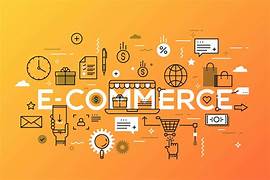Exploring the Effect of E-Commerce Platforms on Small Business Growth
E-commerce platforms have revolutionized the way small businesses operate, offering them opportunities to reach broader markets, reduce operational costs, and compete with larger enterprises. This article delves into the profound impact of e-commerce platforms on small business growth, examining the benefits, challenges, and future prospects for small enterprises in the digital marketplace.
The Rise of E-Commerce Platforms
The proliferation of e-commerce platforms such as Amazon, eBay, Shopify, and Etsy has democratized access to global markets. Previously, small businesses were constrained by geographical limitations and the high costs associated with physical retail. E-commerce platforms have eradicated these barriers, providing a virtual storefront accessible to customers worldwide.
Key statistics underscore this growth:
- In 2023, global e-commerce sales reached $6.3 trillion, with small businesses contributing a significant portion.
- Over 40% of small businesses now operate online, leveraging platforms to scale operations.
Benefits of E-Commerce Platforms for Small Businesses
- Market Expansion: E-commerce enables small businesses to reach customers beyond their local areas. With tools for international shipping and currency conversion, businesses can tap into a global customer base without establishing a physical presence in multiple locations.
- Cost Efficiency: Traditional brick-and-mortar stores incur high overhead costs, including rent, utilities, and staffing. E-commerce platforms reduce these expenses, allowing small businesses to allocate resources more effectively toward product development and marketing.
- Enhanced Customer Insights: Most e-commerce platforms provide analytics tools that offer valuable insights into customer behavior, preferences, and purchasing patterns. These insights help small businesses tailor their offerings and improve customer experiences.
- Marketing Opportunities: Platforms like Shopify and Etsy offer integrated marketing tools, such as SEO optimization, email campaigns, and social media integration. These tools empower small businesses to build brand awareness and engage with their target audiences more effectively.
- Scalability: Unlike physical stores, e-commerce platforms can accommodate rapid growth. Businesses can scale operations by adding new products, expanding inventory, and increasing shipping capabilities without significant infrastructure investments.
- Payment Flexibility: E-commerce platforms offer secure and diverse payment options, enhancing convenience for customers and ensuring smoother transactions for businesses.
Challenges Faced by Small Businesses in E-Commerce
Despite its numerous advantages, the e-commerce landscape is not without challenges. Small businesses must navigate several hurdles to succeed:
- Intense Competition: The digital marketplace is crowded, with small businesses competing against established brands and other small enterprises. Standing out requires innovative strategies and consistent effort.
- Logistics and Fulfillment: Managing inventory, shipping, and returns can be complex, especially for small businesses with limited resources. Delayed deliveries or logistical errors can lead to customer dissatisfaction.
- Platform Fees and Commissions: While e-commerce platforms provide convenience, they often charge transaction fees, listing fees, or commissions. These costs can eat into profit margins, especially for businesses with low-volume sales.
- Cybersecurity Concerns: Small businesses are increasingly targeted by cyber threats. Ensuring the security of customer data and safeguarding against breaches is critical but can be resource-intensive.
- Dependence on Platform Policies: Small businesses operating on third-party platforms are subject to the platform’s rules and changes. Policy shifts, fee increases, or algorithm adjustments can significantly impact visibility and profitability.
- Technological Barriers: Not all small business owners are tech-savvy. Adopting and optimizing e-commerce platforms often requires technical knowledge or external expertise, which can be costly.
Success Stories: Small Businesses Thriving Through E-Commerce
- Beardbrand: What started as a niche brand for beard grooming products scaled exponentially through Shopify. By leveraging e-commerce tools and content marketing, Beardbrand reached a global audience and established itself as an industry leader.
- Three Bird Nest: This handmade accessories business grew from a single Etsy store to a multi-million-dollar enterprise. The owner’s focus on high-quality visuals and customer engagement exemplifies how small businesses can thrive online.
- Blissworld: A skincare brand that expanded its reach through Amazon and its own e-commerce site. Blissworld’s use of data analytics to understand customer preferences was key to its growth.
Future Trends in E-Commerce for Small Businesses
The evolution of e-commerce continues to shape opportunities for small businesses. Key trends include:
- Personalization through AI: Artificial intelligence enables small businesses to provide personalized shopping experiences. From product recommendations to tailored marketing campaigns, AI enhances customer satisfaction and loyalty.
- Mobile Commerce: With the rise of smartphones, mobile commerce is becoming the norm. Small businesses must optimize their e-commerce platforms for mobile users to remain competitive.
- Sustainability Practices: Consumers are increasingly valuing sustainability. Small businesses can differentiate themselves by adopting eco-friendly practices, such as sustainable packaging and carbon-neutral shipping options.
- Social Commerce: Platforms like Instagram and TikTok are merging social media with e-commerce. Small businesses can use these channels to connect with audiences and drive sales directly through social media platforms.
- Subscription Models: Subscription-based services are gaining traction across industries. Small businesses can generate recurring revenue by offering subscription options for products or services.
- Voice Commerce: As voice-activated devices like Alexa and Google Home gain popularity, optimizing for voice search and voice-activated shopping will become crucial for e-commerce success.
Strategies for Small Business Success in E-Commerce
- Build a Strong Brand: A recognizable brand identity helps small businesses stand out in crowded markets. Consistent visuals, messaging, and customer experiences are essential.
- Leverage Digital Marketing: Using SEO, pay-per-click advertising, and social media marketing can drive traffic to e-commerce stores and increase conversions.
- Focus on Customer Experience: Providing seamless navigation, quick load times, and excellent customer support builds trust and encourages repeat business.
- Utilize Data Analytics: Regularly analyzing customer data helps small businesses refine their strategies and identify new opportunities.
- Collaborate with Influencers: Partnering with influencers who align with the brand’s values can amplify reach and drive sales.
- Adapt to Feedback: Listening to customer feedback and making improvements based on their suggestions fosters loyalty and enhances the shopping experience.
Conclusion
E-commerce platforms have unlocked unprecedented growth opportunities for small businesses, enabling them to compete in a global marketplace with fewer resources. While challenges persist, innovative strategies and a focus on customer satisfaction can help small enterprises thrive. As technology evolves and consumer behavior shifts, small businesses that embrace e-commerce and adapt to emerging trends will be well-positioned to achieve long-term success.


